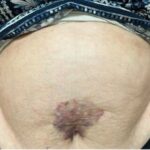Infertility impacts couples around the world, presenting emotional and physical challenges for those trying to conceive. Modern reproductive medicine offers effective treatments when natural conception is difficult. Key options include In Vitro Fertilization (IVF), diagnostic procedures like semen analysis and testicular sperm extraction, and Intrauterine Insemination (IUI). Each treatment addresses specific needs and provides tailored solutions for couples struggling with infertility.
1. In Vitro Fertilization (IVF)
One of the most advanced assisted reproductive technologies available is In Vitro Fertilization, more commonly known as IVF. The process begins with retrieving eggs from the ovaries and fertilizing them with sperm in a laboratory. The resulting embryos are then transferred to the uterus, offering the potential for pregnancy in cases where natural conception may not be possible.
Hormonal medications stimulate the ovaries to produce multiple eggs in a single cycle, and doctors monitor their development with ultrasounds and blood tests. Once the eggs mature, a doctor retrieves them through a minor surgical procedure. In the laboratory, specialists combine the eggs with sperm under controlled conditions to facilitate fertilization and monitor the resulting embryos for several days to confirm proper development.
After selecting high-quality embryos, doctors transfer them to the uterus using a thin catheter. IVF effectively addresses various fertility issues, including blocked fallopian tubes, severe male infertility, unexplained infertility, and age-related fertility decline. Success rates depend on factors like age, underlying fertility issues, and the clinic’s expertise in performing the procedure.
2. Testicular Sperm Extraction (TESA)
The main diagnostic tool for male factor infertility is semen analysis. This procedure measures key sperm factors like concentration, motility, shape (morphology), and semen volume. It also checks pH levels and white blood cell presence to identify infections or other issues.
For men with severely low sperm counts or no sperm in the ejaculate, testicular sperm extraction (TESA) may be an option. This minimally invasive procedure uses a fine needle to extract sperm directly from testicular tissue and is effective for cases where sperm production occurs but transportation is impaired. Extracted sperm can then be used in in vitro fertilization (IVF) with intracytoplasmic sperm injection (ICSI), offering options to couples facing severe male infertility.
3. Intrauterine Insemination (IUI)
Intrauterine insemination (IUI) is a less invasive fertility treatment compared to IVF. The procedure involves placing specially prepared sperm directly into the uterus around the time of ovulation. Sperm is first prepared in a laboratory, where technicians wash and concentrate the sample to select the most motile sperm. This step improves sperm quality, removes seminal fluid, and minimizes discomfort during the procedure.
Timing plays a key role in IUI success, with ovulation-stimulating medications confirming eggs release at the right moment. Medical professionals rely on ultrasounds and hormone testing to precisely schedule insemination. During the procedure, they use a thin catheter to place prepared sperm directly into the uterine cavity near the fallopian tubes. IUI works particularly well for addressing mild male factor infertility, cervical factor infertility, unexplained fertility issues, or ovulation disorders when combined with fertility medications.
Prioritize Fertility Care
These approaches target different aspects of infertility and can be used individually or together, depending on your situation. Consulting a reproductive medicine specialist is key to finding the best options based on your circumstances and medical history. Take time to understand each option, discuss success rates and risks, and choose the best path for you.









Leave a Reply